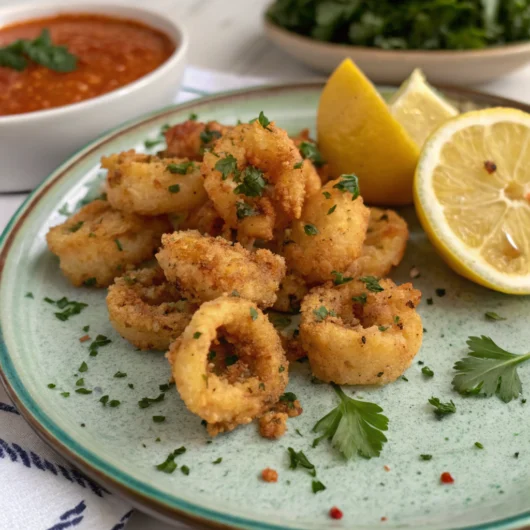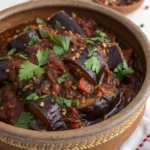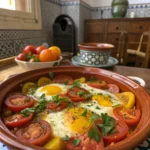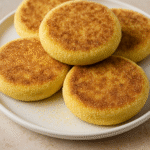The Best Fluffy Pancakes recipe you will fall in love with. Full of tips and tricks to help you make the best pancakes.
Moroccan Recipe: 5 Secrets to Perfect Crispy Fried Calamari
Course: AppetizersCuisine: MoroccanDifficulty: Easy4
servings30
minutes15
minutes300
kcal45
minutesFor the Calamari:
- 1 pound fresh squid, cleaned and sliced into ½-inch rings
2 cups all-purpose flour
2 tablespoons cornstarch (this is your crispiness insurance policy)
1 tablespoon ras el hanout (the soul of authentic moroccan cuisine)
1 teaspoon ground cumin
1 teaspoon ground coriander
½ teaspoon smoked paprika
½ teaspoon ground ginger
¼ teaspoon cayenne pepper (adjust if you’re a spice wimp like my cousin)
1 teaspoon salt
½ teaspoon black pepper
2 large eggs, beaten
Vegetable oil for frying (about 4 cups)
For the Moroccan Yogurt Dipping Sauce:
- ½ cup plain Greek yogurt
2 tablespoons harissa paste (or sriracha if you can’t find harissa)
1 tablespoon fresh lemon juice
1 tablespoon fresh mint, finely chopped
1 garlic clove, minced
Salt to taste
Moroccan recipe enthusiasts, gather ’round! I’m about to spill the tea on my grandmother’s legendary fried calamari that had our entire neighborhood in Casablanca practically breaking down our door every Friday night. Trust me, once you master this authentic moroccan cuisine gem, you’ll never look at regular calamari the same way again.
Picture this: I’m eight years old, standing on a wobbly stool in my grand-mère’s tiny kitchen, watching her work magic with what looked like rubber bands from the sea. “Aicha,” she’d say in her thick Darija accent, “the secret isn’t in the squid – it’s in the patience.” Little did I know she was teaching me one of the most coveted traditional moroccan recipe techniques that would later make me the hero of every dinner party I’ve ever hosted.
This isn’t your average Mediterranean calamari, folks. We’re talking about a moroccan food masterpiece that combines the coastal treasures of our Atlantic shores with the aromatic spice symphony that makes Moroccan cooking absolutely irresistible. And the best part? It’s way easier than you think – making this the perfect easy moroccan recipe for both kitchen newbies and seasoned home cooks.
Table of Contents
Why This Moroccan Calamari Recipe Will Change Your Life
Let me be real with you – I’ve tried calamari from fancy restaurants in Marrakech to hole-in-the-wall joints in New York, and nothing comes close to this moroccan recipe. The secret lies in our unique spice blend that transforms ordinary squid into something that’ll make your taste buds do a happy dance.
The magic happens when traditional ras el hanout meets perfectly tender squid rings, creating a flavor explosion that’s both familiar and exotic. Plus, the yogurt-harissa dipping sauce? Chef’s kiss – it’s like having a Moroccan beach vacation in your mouth.
Ingredients for the Ultimate Moroccan Fried Calamari
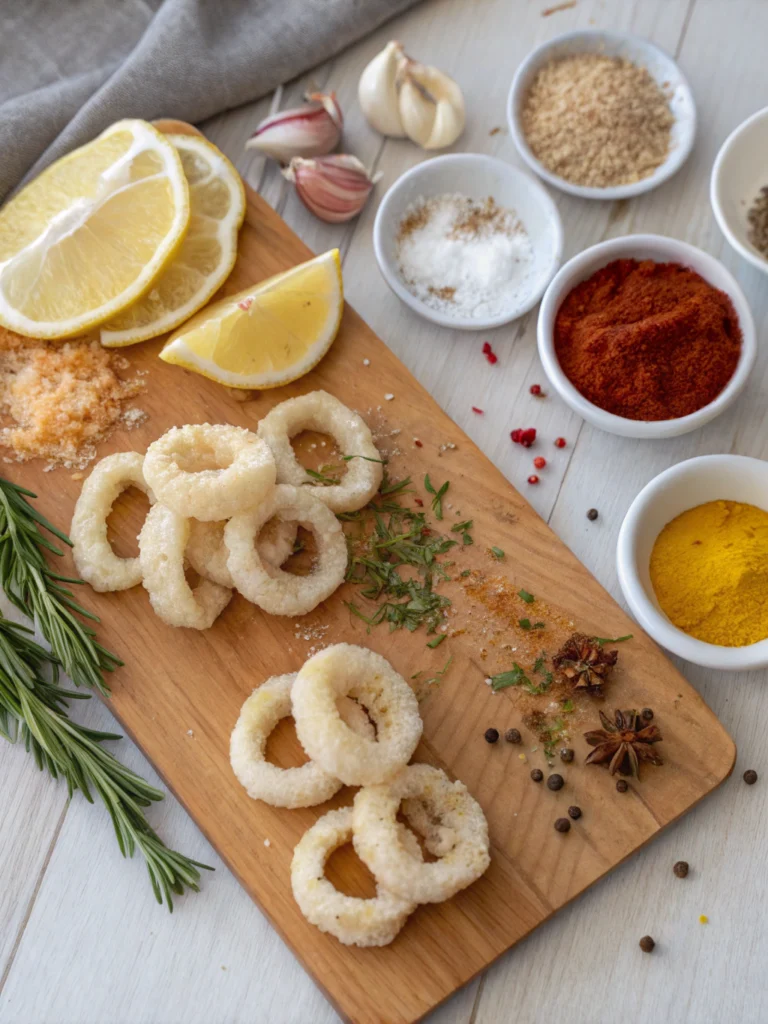
Step-by-Step Instructions for Perfect Moroccan Calamari
Step 1: Prep Your Squid Like a Pro
Clean your squid thoroughly – and I mean thoroughly. Remove the head, innards, and that plastic-like cartilage. Peel off any purple skin that’s still clinging on for dear life. Cut the body into perfect ½-inch rings and pat them drier than the Sahara with paper towels. Trust me on this – wet squid equals oil volcano in your kitchen.
Step 2: The Patience Game (Worth Every Minute)
Here’s where my grandmother’s wisdom kicks in. Sprinkle your squid rings with ½ teaspoon of salt, cover them, and let them chill in the fridge for 30 minutes. I know, I know – you want to cook them NOW. But this little rest makes the squid incredibly tender. It’s like a spa day for your seafood.
Step 3: Create Your Moroccan Magic Dust
In a large bowl, combine flour, cornstarch, ras el hanout, cumin, coriander, paprika, ginger, cayenne, remaining salt, and black pepper. Mix it like you’re casting a delicious spell – because honestly, that’s exactly what you’re doing with this traditional moroccan recipe.
Step 4: Set Up Your Assembly Line
Get organized, people! Place your beaten eggs in one bowl, your spiced flour in another, and have your squid ready to go. This setup will save you from that frantic “where did I put the eggs?” moment while your oil is screaming hot.
Step 5: The Double-Dip Technique
Dip each squid ring first in the egg mixture, then coat thoroughly in your Moroccan spiced flour. For the overachievers (like me), do a double-dip on a few rings – flour, egg, flour again. These will be your golden, extra-crispy showstoppers.
Step 6: Heat Management is Everything
Heat your oil to exactly 350°F (175°C) in a heavy-bottomed pot. Use a thermometer – guessing oil temperature is like playing Russian roulette with your dinner. Too cool and you get soggy sadness; too hot and you get burnt disappointment.
Step 7: Fry in Small Batches (Resist the Temptation)
Drop 8-10 rings at a time into the hot oil. I know you want to dump them all in, but overcrowding is the enemy of crispy moroccan food. Fry for 2-3 minutes until they turn golden brown and gorgeous.
Step 8: Drain and Season Immediately
Remove with a slotted spoon, drain on paper towels, and hit them with a pinch of salt while they’re still sizzling. This is when the salt really penetrates and makes magic happen.
Step 9: Whip Up That Killer Dipping Sauce
While your calamari is frying, mix all the dipping sauce ingredients in a bowl. The tangy yogurt cuts through the richness while the harissa brings that authentic Moroccan heat. It’s like the perfect supporting actor that makes the star shine even brighter.
Pro Tips for Calamari Success
Temperature is Your Best Friend
Seriously, get a thermometer. I learned this the hard way after serving my first batch of calamari that had the texture of rubber boots. Consistent 350°F oil is non-negotiable for this easy moroccan recipe.
Don’t Skip the Salt Rest
That 30-minute salt massage isn’t optional – it’s the difference between tender, succulent squid and chewy disappointment. Use this time to prep your other ingredients or make yourself a mint tea.
Fresh vs. Frozen Squid
Fresh is fantastic, but quality frozen squid works perfectly fine. Just make sure it’s completely thawed and patted dry. I’ve used both, and while fresh has a slight edge, frozen won’t ruin your authentic moroccan cuisine dreams.
The Cornstarch Secret
That cornstarch isn’t just taking up space – it creates an incredibly light, crispy coating that stays crunchy longer than flour alone. It’s like insurance for your crispiness.
Serving Suggestions That’ll Impress Everyone
Serve your Moroccan fried calamari immediately while it’s still crackling hot. I like to arrange them on a beautiful platter with:
- Fresh lemon wedges for that bright acid pop
- Scattered fresh cilantro leaves
- The harissa yogurt sauce in a small bowl for dunking
- Some warm pita bread on the side
For a full moroccan food experience, pair this with a simple tomato and cucumber salad dressed with olive oil and mint. And if you really want to go all out, serve it alongside some fluffy couscous with dried fruits and nuts.
Storage and Reheating Tips
Let’s be honest – leftovers are rare with this recipe, but if you somehow have self-control:
Storing: Keep leftover calamari in the fridge for up to 2 days in an airtight container.
Reheating: Skip the microwave (it turns them into rubber). Pop them in a 350°F oven for 5-7 minutes to restore that beautiful crispiness.
Make-Ahead: You can bread the calamari up to 24 hours ahead and keep them covered in the fridge. The dipping sauce actually gets better after a day or two.
Frequently Asked Questions
Can I make this gluten-free?
Absolutely! Substitute the all-purpose flour with a 2:1 blend of rice flour and tapioca starch. The texture will be slightly different but still delicious for this moroccan recipe.
What if I can’t find ras el hanout?
Make your own by mixing equal parts cumin, coriander, cinnamon, ginger, and paprika. It won’t be exactly the same, but it’ll still give you that traditional moroccan recipe flavor profile.
Can I bake these instead of frying?
Sure! Spray them with olive oil and bake at 425°F for 10-12 minutes, flipping halfway through. They won’t be quite as crispy, but they’ll still be tasty and much healthier.
How do I know when the calamari is done?
They should be golden brown and the squid should look opaque white inside. If they start looking rubbery, you’ve gone too far – squid cooks fast!
Can I freeze the breaded calamari?
Yes! Freeze them on a tray first, then transfer to a container. They’ll keep for up to a month and can be fried straight from frozen (just add an extra minute to cooking time).
The Final Verdict on This Moroccan Calamari
This authentic moroccan cuisine recipe has been my secret weapon for years, and now it’s yours too. The combination of perfectly spiced coating and tender squid creates something truly special that bridges the gap between comfort food and exotic cuisine.
Every time I make this, I’m transported back to my grandmother’s kitchen, surrounded by the sounds of sizzling oil and the intoxicating aroma of Moroccan spices. It’s more than just food – it’s a connection to our rich culinary heritage and a way to share a piece of Morocco with everyone at your table.
Whether you’re hosting a dinner party or just want to treat yourself to something special, this easy moroccan recipe delivers restaurant-quality results with ingredients you can find at any good grocery store. The best part? Once you master the technique, you can experiment with different spice combinations and make it your own.
Don’t forget to rate the recipe & share it!


